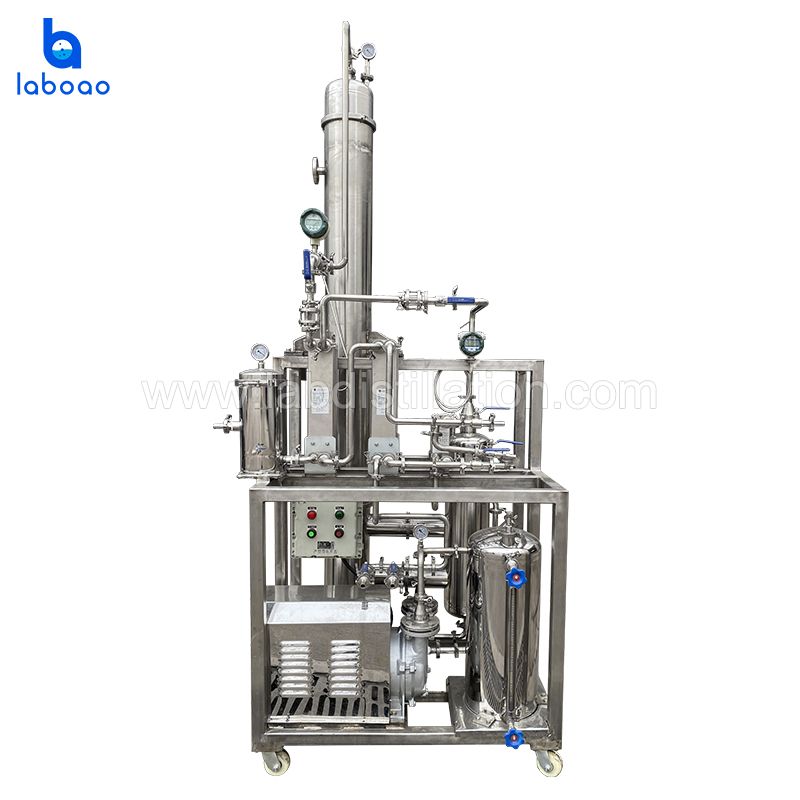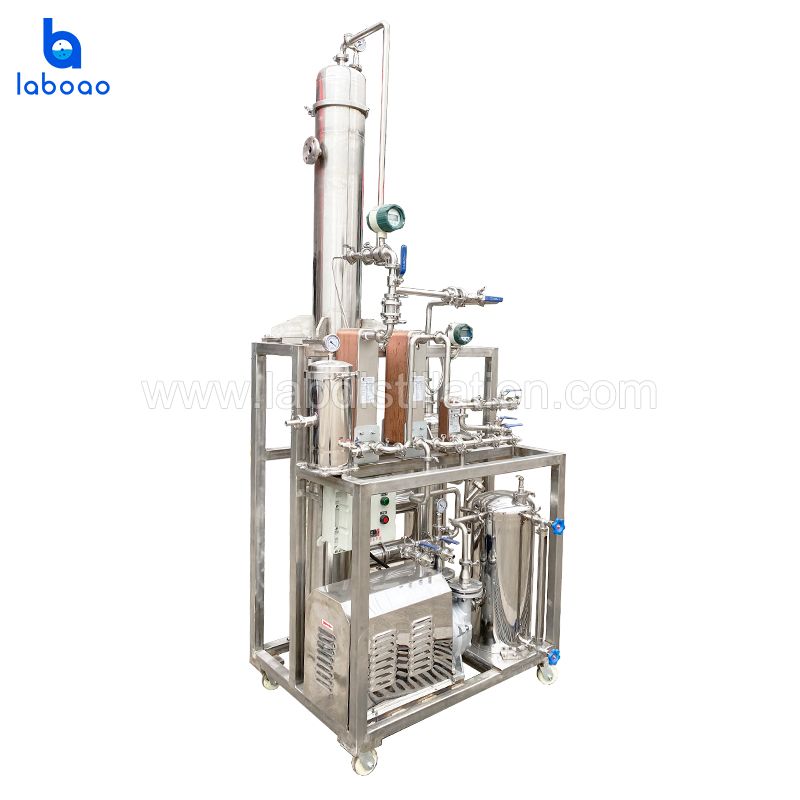
1. Significant Differences in Principles
Molecular Distillation: Based on the Free Path of Molecular Motion
The principle of molecular distillation is quite unique. It exploits differences in the mean free path of molecules of different substances to achieve separation. Simply put, the straight-line distance between two consecutive collisions during molecular motion is the molecular free path. Different types of molecules have different free paths due to their size, shape, and mass. Under a high vacuum environment, the frequency of intermolecular collisions is greatly reduced, resulting in a longer free path for light molecules and a shorter free path for heavy molecules. Through the ingenious design of the evaporation and condensation surfaces, light molecules are easily collected by the condensation surface, while heavy molecules remain near the evaporation surface, thus achieving the separation of light and heavy components.
Thin-Film Evaporator: Utilizing Thin Films and Heat Transfer
Thin-Film evaporators rely on the thin film formed on the heated surface, greatly increasing the evaporation area. Simultaneously, they utilize the temperature difference between the material and the heating medium for heat transfer, rapidly vaporizing and separating the volatile components in the material. During this process, the material, under the influence of gravity, centrifugal force, or other external forces, is evenly distributed on the heating surface, forming an extremely thin liquid film. This significantly shortens the heat transfer distance and improves evaporation efficiency.
2. Different Structures
Molecular Distillation: A Sophisticated and Complex Construction
Molecular distillation equipment typically consists of a high vacuum system, an evaporator, a condenser, and a fraction collector. The evaporator, a core component, requires a highly sophisticated design to ensure uniform distribution of the material on the evaporation surface and provide suitable space and conditions for molecular movement. Strict requirements also exist for the distance between the condenser and the evaporator to ensure that light molecules can reach the condensation surface without interference from other molecules. The entire equipment requires extremely high manufacturing precision and sealing performance to maintain a high vacuum environment.
Thin-Film Evaporator: Simple and Efficient Design
The thin-film evaporator has a relatively simple structure, primarily consisting of a heating chamber, an evaporation chamber, a distribution device, and a demister. The heating chamber typically adopts a jacketed or shell-and-tube structure, heating the material with a heating medium such as steam or hot water. The distribution device distributes the material evenly across the heating surface, forming a thin film. The evaporation chamber collects the vapor produced by evaporation, while the demister removes droplets entrained in the vapor to ensure effective separation.
3. Performance Differences
Molecular Distillation: High-Precision Separation under High Vacuum
Molecular distillation operates under extremely high vacuum conditions, typically reaching 10⁻³ to 10⁻⁵ Pa. This high vacuum minimizes the probability of intermolecular collisions, allowing light molecules to escape quickly and be condensed and collected. This results in extremely high separation efficiency, making it particularly suitable for separating high-boiling, heat-sensitive, and easily oxidized substances. For example, in the purification of natural vitamin E, molecular distillation can effectively separate impurities at low temperatures, yielding a high-purity vitamin E product. However, the investment cost of molecular distillation equipment is high, and the processing capacity is relatively small.
Thin-Film Evaporator: An Efficient and Energy-Saving Evaporation Expert
Thin-Film evaporators form a thin film on the heated surface, resulting in extremely efficient heat transfer. They can quickly evaporate volatile components from the material, offering the advantages of high evaporation intensity and short residence time. This makes them excellent for applications with high processing volumes and less demanding separation precision, such as juice concentrate and industrial wastewater treatment. Moreover, due to its high heat transfer efficiency, energy consumption is relatively low, resulting in significant energy savings.
4. Different Application Scenarios
Molecular Distillation: Focused on High-End Fine Separation
Due to its high-precision separation performance and excellent protection of heat-sensitive substances, molecular distillation is highly favored in the pharmaceutical, fine chemical, and natural product extraction industries. In the pharmaceutical industry, it is used to purify drug intermediates and isolate active pharmaceutical ingredients; in fine chemicals, it is used to produce high-purity flavors and additives; and in natural product extraction, it is used to extract and separate precious plant essential oils and alkaloids.
Thin-Film Evaporator: Suitable for Large-Scale Conventional Evaporation
Thin-Film evaporators, due to their high energy efficiency and large processing capacity, are widely used in the food, chemical, and environmental protection industries. In the food industry, they are used to concentrate juice, milk, and syrups; in the chemical industry, they are used to concentrate solutions and recover solvents; and in the environmental protection industry, they are used to treat industrial wastewater and achieve water resource recycling.
5. Conclusion
Although both molecular distillation and thin-film evaporators are separation devices, they differ significantly in their principles, structures, performance, and application scenarios. Understanding these differences will help us choose the most suitable equipment in actual production based on factors such as material properties, separation requirements and production scale, so as to achieve efficient, energy-saving and economical production goals.

